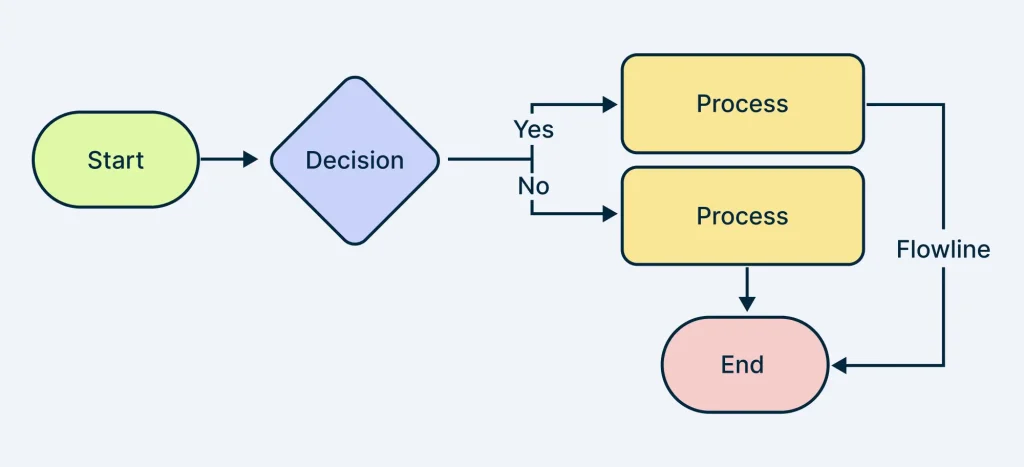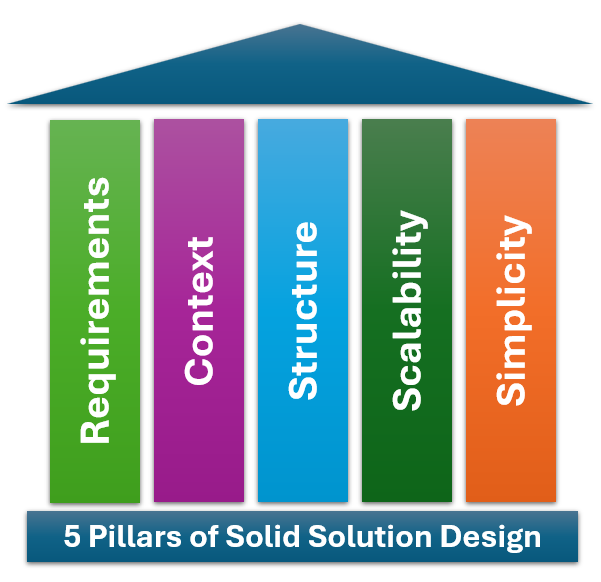Set the foundation for what “good design” really means in practice.
Whether you’re building a digital wallet, modernizing legacy systems, or integrating a new fraud detection tool, solution design is at the heart of delivering technology that works – today and tomorrow. These five pillars help ensure you’re building solutions that are functional, scalable, and maintainable without drowning in complexity.
1. Requirements:
Know What You’re Solving
Solid design starts with understanding the problem, not diving into tools or technologies. Requirements aren’t just a list of features – they’re about defining the why behind the system.
In banking, for example, imagine you’re asked to design a “dispute transaction” feature. If you only gather surface-level requirements like “add a button for dispute,” you might miss the fact that different transaction types (e.g., credit card vs. direct debit) require different workflows, data from different systems, and even regulatory handling.
Instead, ask:
- What’s triggering the dispute?
- What regulations apply?
- What happens to customer trust if this fails?


💡 Real-life miss:
A retail bank implemented a generic “dispute” button, only to realize later that business logic differed across transaction types. Redesigning it mid-project cost time and trust. Had they clarified use cases upfront, they could’ve scoped the right architecture from day one.
2. Context:
Fit Into the Bigger Picture
No design should exist in isolation. Understanding context means aligning your solution with the wider ecosystem – business processes, legacy systems, compliance standards, and customer experience.
In a bank, this might mean knowing that your new mobile loan pre-approval tool must feed data into the core banking system, notify credit risk teams, and be auditable for compliance. It’s not just a front-end app; it’s a cog in a complex machine.
Think about:
- How does this solution interact with upstream and downstream systems?
- Are there any cross-functional or regulatory impacts?
- Who needs to be informed or involved?

🐝 Example:
A bank once launched a chatbot for customer service without integrating it with the CRM. Agents couldn’t see chat history, frustrating customers and duplicating effort. Context-aware design would have flagged this dependency early.
3. Structure:
Define the Blueprint
Once you understand the requirements and context, it’s time to give your solution structure. This is where you define components, services, data flows, and boundaries.
In a banking project, suppose you’re modernizing the Know Your Customer (KYC) process. A good design might separate the document capture component, the verification engine, and the audit logger into different modules or microservices.
Why? So that changes in one don’t break the others and can scale independently.
Design with:
- Clear separation of concerns
- Logical grouping of functions and services
- A visual blueprint that’s easy for all stakeholders to grasp

🧠 Tip:
Even if you’re not drawing a “perfect” UML diagram, create a simple architecture diagram showing flow and responsibilities. It helps align developers, testers, and business analysts.
4. Scalability:
Design for Growth
Great systems are built to grow – not just handle today’s load but adapt to increasing demands, users, data, or integrations.
In banking, imagine a fraud detection tool that works fine with 10,000 transactions an hour. But what happens on Black Friday, or when launching in a new country? A scalable design might use message queues to handle spikes or allow for horizontal scaling of decision engines.
Evaluate:
- Will this solution handle 10x more users or data?
- Can services scale independently?
- What’s the bottleneck, and how will it be managed?

⚙️ Example:
A payment API in one bank crashed regularly during salary payment periods. The cause? It relied on synchronous calls to an overloaded mainframe. A scalable redesign introduced caching and async processing, making it resilient and fast.
5. Simplicity:
Keep It Elegant
Simplicity doesn’t mean lacking power-it means having clarity. When a design is simple, it’s easier to build, test, maintain, and hand over.
Let’s say you’re introducing a fee structure for international transfers. You could create a highly configurable engine with 200 settings-or, start with rule-based logic that covers 95% of cases and iterate. Often, the simplest path gets you to value faster.
Aim for:
- Clean, well-named components
- Familiar design patterns
- Solutions that solve today’s problem well without overengineering for hypothetical futures
🐝 BeeStack belief:
If a junior dev can’t understand your architecture in under 10 minutes, it’s too complicated.




